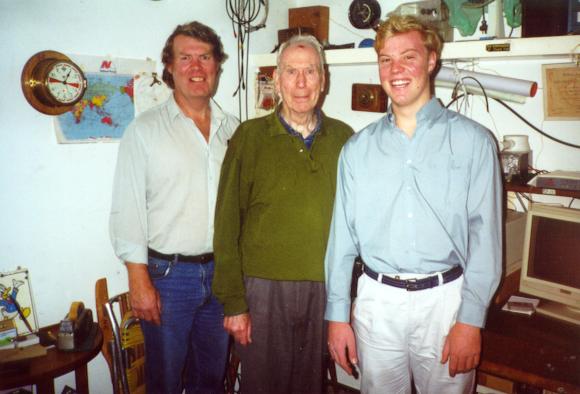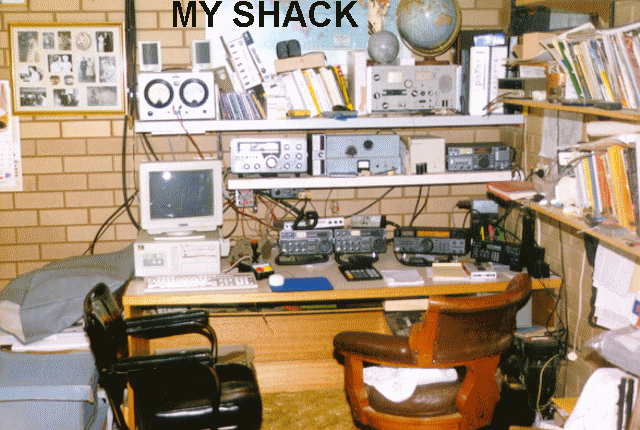If your at all interested in becoming involved with Amateur Radio I would suggest you make yourself known to an active Radio Amateur in your area. If you don't know one contact the Wireless Institute of Australia in your state to find a club near you. For people in the USA contact the American Radio Relay League(ARRL) or in the U.K. the Radio Society of Great Britian (RSGB) via the links located at the bottom of this page. If you don't know who represents Radio Amateurs in your country I'm sure one of the organizations mentioned above would be able to help you.
 The picture at the left shows some of my home made equipment. At the left is a 3 band HF transceiver. This is all solid state except for a pair of valves in the transmitter. The next item is my television transmitter. It was a uhf 2 way radio. The receiver has been completely removed and the transmitter converted to 444.25mhz(UHF) and a video modulator added. Sitting on top of the tv transmitter is a vhf hand held transceiver.
The picture at the left shows some of my home made equipment. At the left is a 3 band HF transceiver. This is all solid state except for a pair of valves in the transmitter. The next item is my television transmitter. It was a uhf 2 way radio. The receiver has been completely removed and the transmitter converted to 444.25mhz(UHF) and a video modulator added. Sitting on top of the tv transmitter is a vhf hand held transceiver.
Christmas 1974 saw Darwin all but destroyed by cyclone Tracey. Amateur Radio operators provided essential communications during this difficult time. Radio Amateurs have been instumental in providing emergency communication on many occassions and practise their skills through field day activities where stations operate portable away from the comfort of their homes and by providing communication for non profit organizations and sporting events.
There are many aspects to this hobby and the only limitation is your imagination. Did you know that Amateur Radio was aboard the MIR space craft, some shuttle misssions and will be permanently installed on the new international space station ?
The photo below represents 3 generations of radio amateurs. From L-R. Myself, Ian VK3AQU. My Father, Neil VK3AQD and my son Christopher, VK3MNI.

(photo taken 11-6-2000)
Some Amateur activities include:-

In the mean time here are some interesting sites to visit:-
This site is intended as a very basic introduction to Amateur Radio. If you have any comments,suggestions or questions please feel free to send me an E-mail
73's from Ian VK3AQU
 You are visitor number
You are visitor number